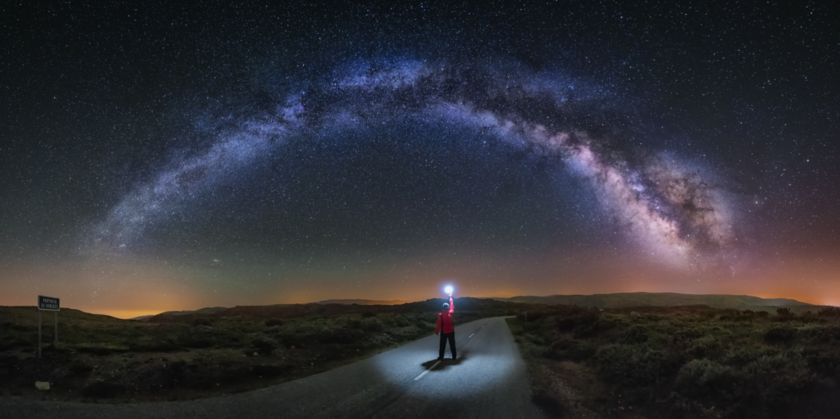
CFS
We are a strategic partner of Commonwealth Fusion Systems in the research for the industrial development of magnetic confinement fusion.

Or , our new artificial intelligence tool.
A technological solution that generates large amounts of energy with a safe, sustainable and virtually unlimited process.

Magnetic confinement fusion releases an enormous amount of energy without emitting greenhouse gases and with the advantage of being virtually unlimited, imitating the natural reaction that powers stars.

order of magnitude of temperatures at which fusion takes place on earth
fuel necessary to provide electricity to a city of 1 million people for one day
The fusion of two hydrogen nuclei releases an enormous amount of energy and it is a totally natural physical reaction that powers the sun and the other stars. In the fusion process, the combination of two light atoms, such as hydrogen isotopes, produces an element, such as helium, with a mass that is slightly smaller than the sum of the two initial nuclei. This "mass defect" is converted into an enormous amount of energy, in accordance with Einstein's famous equation (E=mc2). The remarkable advantage of fusion energy is that it does not emit any greenhouse gases, highly polluting substances or radioactive materials, which makes it an extremely attractive source of energy. It also exploits a virtually inexhaustible process, because it uses as fuel two isotopes of hydrogen: deuterium, which is obtained from seawater, and tritium, which can be produced through a physical reaction with lithium. This process generates an immense amount of energy. According to the International Atomic Energy Agency, fusion could generate around four million times more energy per kilogram of fuel than burning coal!
Artificially replicating fusion on earth is extremely challenging because the gravitational forces present in stars, which facilitate the reaction, have to be replaced by heating the hydrogen isotopes to temperatures exceeding 100 million degrees - about ten times the temperature at the core of the Sun. More specifically, the thermal agitation that enables fusion takes place inside a gas ionised at a very high temperature called plasma. Combined with these high temperatures, a stable plasma can be obtained on Earth by magnetic confinement. As the name suggests, this method uses very strong magnetic fields to confine the plasma in which fusion takes place inside vacuum machines shaped like a doughnut (in geometry this shape is called toroid), called “Tokamaks”. This is why this technology is called magnetic confinement fusion. Plasma at extremely high temperature is then generated, maintained and confined within the chamber, preventing contact with the chamber’s walls.
To generate energy in a fusion reactor, a mixture of deuterium and tritium is fed into the Tokamak. It is first heated to plasma state with specific techniques and then, by further raising the temperature, to conditions suitable for fusion. The fusion process thus releases very energetic neutrons, which are absorbed into a blanket, a coating containing the fusion chamber. Finally, the blanket has the task of absorbing the kinetic energy of the neutrons and transforming it into thermal energy, which is then used to generate electricity by means of systems known and already used in other types of power plant.
Eni CEO

When magnetic confinement fusion becomes industrially developed, an entirely new scenario will open up in which an extended supply of cleaner energy with a safe process and virtually inexhaustible can be ensured. Power plants fuelled by fusion reactors will be able to meet the growing energy demand of large manufacturing and urban settlements while maintaining high sustainability. Smaller plants, integrated with renewable sources, will facilitate the energy supply for small communities and off-grid locations. We have been among the first energy companies to invest in magnetic confinement fusion, and we also are strategic shareholders of Commonwealth Fusion Systems (CFS), a start-up spin-out of the Massachusetts Institute of Technology in Boston, whose roadmap includes building the first fusion power plant capable of feeding electricity into the grid by the early 2030s.
We take part in several projects for the development of fusion energy in collaboration with leading scientific partners and companies in Italy and worldwide.

We are a strategic partner of Commonwealth Fusion Systems in the research for the industrial development of magnetic confinement fusion.

At the Eni-CNR "Ettore Majorana" joint research Centre in Gela, we are taking part in a series of studies on key aspects of fusion.

We collaborate on the Divertor Tokamak Test (DTT), an Enea research project in Frascati (Rome).

We collaborate on research and technological development in the field of fusion energy to build the world’s largest facility for tritium cycle management.
This technology offers the real prospect of a safe energy transition based on a virtually unlimited resource.

Here are scientific institutions and companies we are collaborating with on magnetic confinement fusion.

If you want to change topic, clear the chat and make a new query to receive more relevant results.
This will delete the question history.
If you want to change topic, clear the chat and make a new query to receive more relevant results. This will delete the question history.
Here you can find the full list of your queries.
The answers are generated by artificial intelligence, therefore they may contain inaccuracies. Please read the terms and conditions of use.

EnergIA is an innovative tool based on artificial intelligence capabilities, which can help you navigate the contents of eni.com, quickly finding answers to your questions. EnergIA can also perform a search on a specific topic, providing the most up-to-date data available, or it can invite you to delve deeper into a topic of your interest by suggesting links and specific readings. Start now!
EnergIA is an innovative tool based on artificial intelligence capabilities, which can help you navigate the contents of eni.com, quickly finding answers to your questions. Start now!
EnergIA (ener'dʒia) is a system based on Generative Artificial Intelligence.
Thanks to this technology, we can respond to your requests by querying the most relevant content and documents available on eni.com. (Note: financial documents from the last 12 months and press releases from the last 2 years are considered.)
Through EnergIA, you can delve into topics of interest and have a real-time window into the world of Eni.
If you wish to search for a specific document, press release or news, use the traditional search engine via the magnifying glass icon.
Like all systems that leverage Generative Artificial Intelligence, EnergIA may generate inaccurate or outdated responses. Always consult the sources that EnergIA proposes as the origin of the generated information.
If the system fails to find an exact match for the requested content, it still tends to provide a response.
If you find any inaccuracies in the provided response, please send us your feedback at the bottom of the page: it will be very helpful for us to improve.
Remember that the content generated by the system does not represent Eni’s official position. We therefore invite stakeholders to refer to their designated contacts for official statements: Press Office for journalists, Investor Relations for analysts and investors, Company Secretariat for shareholders etc..
EnergIA can understand questions posed in almost all languages, but we prefer to provide you with a response in English or Italian, the two languages available on eni.com. If you ask a question in Italian, the content on the site in Italian will be consulted. If you ask it in English or any other language, the content in English will be consulted. (Note: the language Eni uses for financial documents/content is predominantly English.)
If questions are formulated that violate the set security criteria, the system will not proceed with processing the response. Please remember not to send personal data.
By using this service, the users acknowledge that they have read and accepted the terms and conditions of use.
Search
EnergIA (ener'dʒia) is a system based on Generative Artificial Intelligence.
Thanks to this technology, we can respond to your requests by querying the most relevant content and documents available on eni.com. (Note: financial documents from the last 12 months and press releases from the last 2 years are considered.)
Through EnergIA, you can delve into topics of interest and have a real-time window into the world of Eni.
If you wish to search for a specific document, press release or news, use the traditional search engine via the magnifying glass icon.
Like all systems that leverage Generative Artificial Intelligence, EnergIA may generate inaccurate or outdated responses. Always consult the sources that EnergIA proposes as the origin of the generated information.
If the system fails to find an exact match for the requested content, it still tends to provide a response.
If you find any inaccuracies in the provided response, please send us your feedback at the bottom of the page: it will be very helpful for us to improve.
Remember that the content generated by the system does not represent Eni’s official position. We therefore invite stakeholders to refer to their designated contacts for official statements: Press Office for journalists, Investor Relations for analysts and investors, Company Secretariat for shareholders etc..
EnergIA can understand questions posed in almost all languages, but we prefer to provide you with a response in English or Italian, the two languages available on eni.com. If you ask a question in Italian, the content on the site in Italian will be consulted. If you ask it in English or any other language, the content in English will be consulted. (Note: the language Eni uses for financial documents/content is predominantly English.)
If questions are formulated that violate the set security criteria, the system will not proceed with processing the response. Please remember not to send personal data.
By using this service, the users acknowledge that they have read and accepted the terms and conditions of use.
A new window into Eni’s world, at your disposal. EnergIA is an innovative tool based on artificial intelligence capabilities, which can help you navigate the contents of eni.com, quickly finding answers to your questions.

